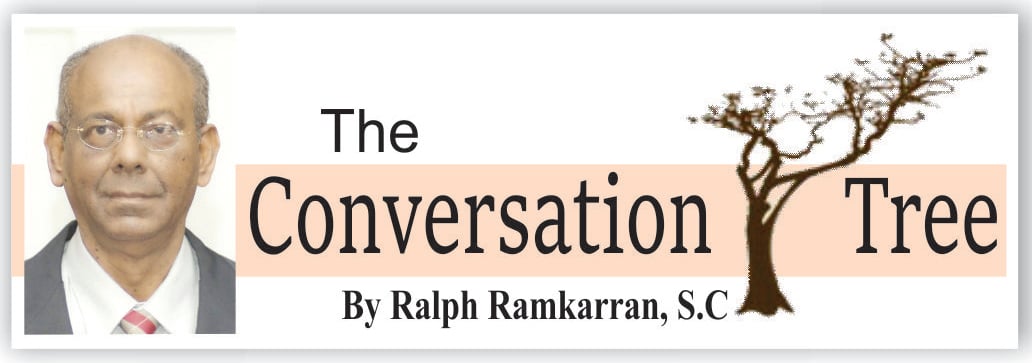The three political parties that invoked section 22 of the Representation of the People Act signed a Memorandum of Understanding (MOU) on Friday setting out the principles on which both their pre- and post-election cooperation will be based. The invocation of section 22, for the first time in Guyana’s electoral history is one small step which can lead to a giant leap for Guyana’s future. The joinder of lists by the three political parties, A New and United Guyana (ANUG)—for which I am the presidential candidate—the Liberty and Justice Party (LJP) and The New Movement (TNM), under section 22 has now led to the unprecedented step of the signing of an MOU for political cooperation among the political parties which have joined together to form the combination of lists, an event among competing political parties that has never hitherto occurred in Guyana.
Section 22 provides that “….two or more lists of candidates shall be joined for the distribution of seats (but not for the purpose of voting) if the representative and deputy representative of each list to be so joined gives notice accordingly in writing to the Chief Election Officer not later than the 25th day before election day; and lists so joined are hereinafter referred to as a combination of lists.” No procedures or methodologies are set out in the Act to give effect to the distribution of seats. No doubt the Elections Commission will have to make recommendations. In the absence of procedures or methodologies in the Act, it is expected that the Elections Commission will consult with the three parties comprising the combination of lists in order to arrive at an agreed position.
The proliferation of new political parties for these elections, the numbers having fallen off since 2001, led to many appeals by well-meaning Guyanese for unity among these parties, no doubt reflecting the desire of many for the new parties to enhance their chances of winning seats in the National Assembly to challenge the duopoly of the two large parties. Clearly heeding the national mood for unity of the new parties, which perhaps has its roots in a yearning for a genuine third force to stand between the two large parties, the AFC having failed to do so, the three parties came upon section 22 and invoked it. Upon the invocation of section 22, it was quite obvious that some level of coordination would be necessary in the event that the combination of lists together obtained an additional seat from the left-over votes. This realization led to the full-fledged MOU setting out principles of cooperation. Hopefully, this is an example to the country and the two main political parties as to what is possible if there is goodwill.
Of fundamental importance to their joint strategy, the new parties commit in the MOU that under no circumstances will they join the government of the party that obtains the plurality or majority for the purpose of obtaining ministerial or other governmental office or to give a minority government a majority in the National Assembly. The three parties have indicated that the Citizens Initiative and Change Guyana were approached directly or indirectly in relation to the joinder but had declined. It would be of great importance in assisting in the transformation of the political culture in Guyana if those parties, and the others that are contesting the elections, can publicly commit to not joining or supporting in the National Assembly the government of either of the two political parties that forms the government after the elections, especially if it is a minority government.
Under the MOU the parties maintain their independence by retaining the right to advance the central issues of their campaigns. At the same time, they commit to mount joint campaigns wherever and whenever possible as well as to cooperate with each other in relation to election day activities to avoid duplication.
In relation to the distribution of seats, the MOU provides that each party would be entitled to the seats it is entitled to, based on the number of votes it receives at the elections. Where the combination receives one or more seats form the left over votes or from having the largest remainder, they will share the seat among themselves in proportion to the votes they receive.
Politics in liberal democracies is based on the adversarial system. Guyana’s adversarial politics follows the same pattern. But the optimal functioning of this system is based on parties alternating in office. Even though this ‘majoritarian’ system cannot accommodate the challenges of bi-communal societies, they can sometimes do so. One such country in which it works is bi-communal Trinidad and Tobago, where there is a large middle class, part of which can change its political alignment based on the political party’s performance in office. Political parties alternate in office in Trinidad and Tobago and this undergirds communal peace. In Guyana, this has not happened in the past, with the PNC in office for 28 years and the PPP for 23 years. This has led to politics based on the struggle for ethno-political dominance. Maybe, just maybe, we are seeing the first baby steps in dismantling this majoritarian system in Guyana.





